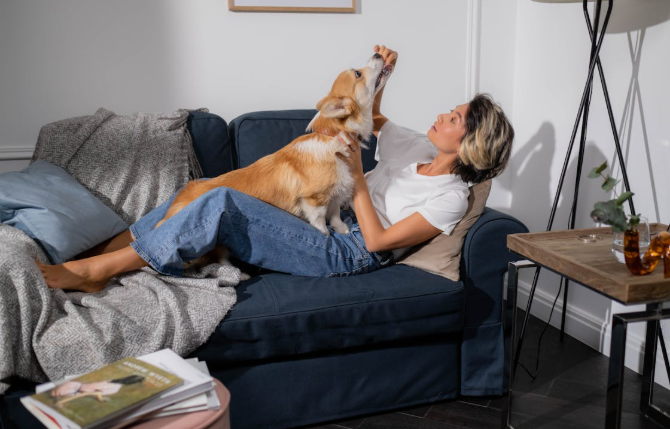Step-by-Step Guide: How to Paint Kitchen Cabinets Like a Pro
- Matej Svoboda
- Mar 5
- 4 min read
Giving your kitchen cabinets a fresh coat of paint is one of the most effective ways to upgrade your kitchen without spending a fortune. Whether you’re aiming for a modern, sleek look or a classic, timeless finish, painting your cabinets can transform your space.
However, achieving a smooth, durable, and professional-looking finish requires proper preparation and technique. In this article, we will guide you through how to paint kitchen cabinets like a pro, from start to finish.
Painting Kitchen Cabinets: A Step-by-Step Guide
Step 1: Gather Your Materials
Before beginning with the paint project, you need to make sure you have the right tools and supplies for the job.
Here’s a checklist of all the materials you will be needing:
✔ High-quality paint (acrylic, latex, or oil-based)
✔ Primer (stain-blocking or bonding primer)
✔ Degreaser or TSP (Trisodium Phosphate)
✔ Fine-grit sandpaper (120-220 grit)
✔ Tack cloth or microfiber cloth
✔ Painter’s tape
✔ Drop cloths or plastic sheeting
✔ High-quality paint brushes (angled brush for edges)
✔ Foam roller or paint sprayer
✔ Screwdriver (for removing hardware)
✔ Wood filler (for filling holes and cracks)
You can use a satin, semi-gloss, or high-gloss finish for cabinets. These finishes are durable, easy to clean, and resistant to moisture and stains.

Step 2: Prepare your Kitchen Area for Painting
Preparing the room before painting is key to a smooth and professional finish. Follow these steps to prepare your kitchen before painting.
Clear the Space – Remove all items from the countertops and cover appliances and floors with drop cloths or plastic sheeting.
Remove Cabinet Doors and Hardware – Use a screwdriver to carefully remove cabinet doors, drawers, and all hardware (hinges, knobs, and handles). Label each door and drawer with painter’s tape so you can reassemble them correctly.
Clean the Cabinets Thoroughly – Cabinets accumulate grease, dirt, and grime, especially in the kitchen. Use a degreaser or TSP solution to clean them thoroughly.
Fill Any Holes or Dents – Use wood filler to fix any scratches, holes, or dents. Let it dry completely before sanding.
Step 3: Sand the Cabinets
Sanding helps the paint adhere better and creates a smooth, professional finish. So, make sure you don’t skip this step.
Use 120-220 grit sandpaper to lightly sand all surfaces, including cabinet doors, drawers, and frames. This removes the glossy finish and roughens the surface for better adhesion. Wipe off dust using a tack cloth or damp microfiber cloth to ensure a clean painting surface.
Pro Tip: If your cabinets have a glossy finish, consider using a liquid deglosser for extra adhesion before priming.
Step 4: Apply Primer
Priming is an essential step. It helps seal the wood, improve paint adhesion, and prevent stains from bleeding through.
Choose the Right Primer – Use a stain-blocking or bonding primer for the best results.
Apply a Thin, Even Coat – Use a foam roller or paintbrush to apply a thin, even coat of primer.
Let It Dry Completely – Follow the primer’s recommended drying time (usually 4-6 hours).
Lightly Sand Again – Once dry, lightly sand the primed surface with 220-grit sandpaper for a super smooth finish. Wipe off dust before painting.
For the smoothest results, you can use a paint sprayer instead of a brush or roller. It creates a flawless, professional finish.
Step 5: Paint the Cabinets
Finally, the step you were waiting for: it’s time to apply the color! With so many beautiful color options available, choosing the right one for your kitchen can sometimes be a confusing decision to make. Read our comprehensive guide to get clarity on what colors you should choose for your kitchen.
Choose the Right Paint – Use a high-quality, durable paint like acrylic, latex, or oil-based paint.
Apply the First Coat – Use a foam roller for large surfaces and an angled brush for edges and corners. Apply thin and even coats to avoid any drips and brush marks.
Let the Paint Dry Completely – Follow the drying time on the paint can (usually 6-8 hours per coat).
Apply a Second Coat – For full, even coverage, apply a second coat once the first coat is fully dry.
Always remember that if you are using a paint sprayer, hold it 6-12 inches away and use light, even strokes to avoid streaks.

Step 6: Let the Paint Cure and Reassemble
Allow Proper Drying Time – Even though paint feels dry within hours, it needs time to cure properly (usually 24-48 hours). Avoid heavy use until fully cured.
Reattach Hardware and Doors – Carefully reinstall doors, drawers, and hardware, following your labels for proper placement.
Clean Up – Remove painter’s tape, clean brushes, and enjoy your freshly painted cabinets!
Bonus Tips for a Professional-Looking Finish for Your Kitchen Cabinets
Use high-quality paint and primer for durability.
Avoid thick coats—thin, multiple layers give better results.
Use a paint sprayer for a factory-smooth finish.
Sand between coats for extra smoothness.
Let the paint cure fully before heavy use.
Get Professional Help from Adam
As easy as it may seem, painting kitchen cabinets is unlike your other DIY jobs. It requires a certain level of expertise and precision that experienced painters possess. If you are not confident about being able to get the task done the way you want it to turn out, it’s better to get professional help. At Adam Painters and Decorators, we can get the task done, with our team of experts, in just a matter of time, so that you can focus on what’s important - decorating your home’s aesthetics. So go ahead and get an estimate of your project with our instant online calculator.
Painting kitchen cabinets is a cost-effective way to refresh your kitchen and give it a modern, stylish look. With the right techniques and patience, you can achieve a professional-grade finish that looks stunning and lasts for years!



